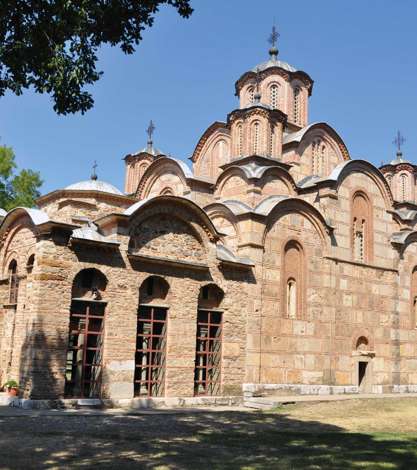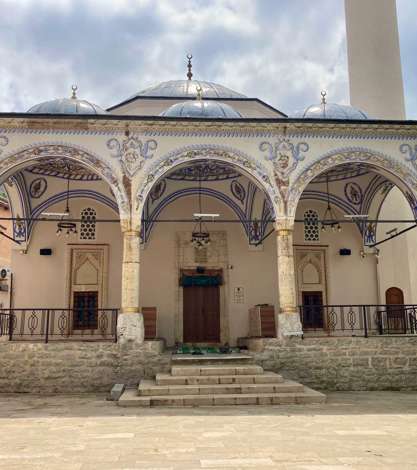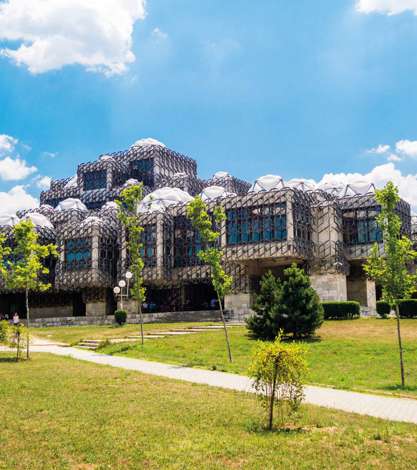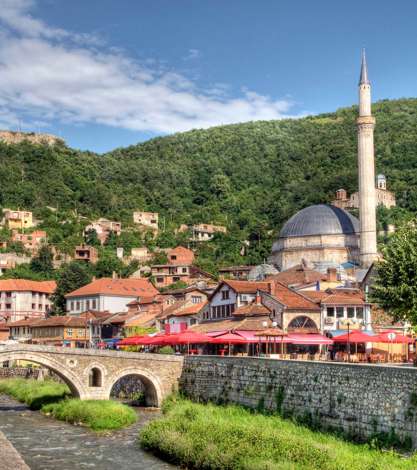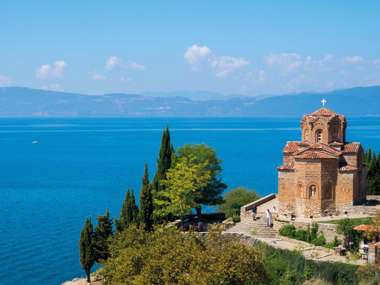Kosovo Tours
The Essence of Kosovo
Now an independent nation, after hundreds of years of fluctuating fortune, Kosovo is quickly establishing itself as a country of charming people, tranquil villages, and medieval enclaves, its modern capital, Pristina, exuding a palpable optimism.
Why choose a tour in Kosovo?
Good things come in little parcels, and compact Kosovo packs centuries of history and heritage into its scenic, landlocked landscapes. From ancient to Ottoman, medieval, and modern eras, Europe’s youngest nation presents its past in mosques, monasteries, and commemorative monuments.
Finding its feet as a modern metropolis, the capital, Pristina, romps through the ages from the 14th-century Çarshi Mosque to the colours and cobbles of the Old Green Market, soulless soviet tower blocks, contemporary malls of concrete and steel, the National Library’s Lego-like design, and the city’s newest icon, the Mother Teresa Cathedral; all interspersed now with countless cafés and bars.
Landmarks in the city’s surrounds are equally varied, from the tall tower of the Gazimestan (Battle of Kosovo) Monument, built in 1953, to the medieval murals of Gracanica Monastery, set on the ruins of a 6th century basilica; the ancient Illyrian/Roman remains of the city of Ulpiana, and Gadimë Cave, a karst limestone cavern of crystalised stalagmites and stalactites, millions of years in the making.
Kosovo’s second city, Prizren plays the role of cultural capital, its mosques, monasteries, churches and stone bridge displaying its Byzantine, Ottoman and Serbian past; the Middle Ages hilltop castle overseeing the red-roofed town below. With a mountain backdrop and a river running through it, Prizren is peppered with craft shops, and cafés and restaurants hem the Shadervan Fountain square.
Highlights within easy reach of the town include historic Gjakova, all but destroyed in the 1999 war, but now restored in traditional style, from its cobbled streets to its terracotta rooftops, lively central square and Kosovo’s oldest bazaar; the UNESCO listed monastery complex of Decan, boasting the largest medieval church in the Balkans, with a thousand beautifully preserved frescoes; and the Patriarchate of Pec, an Orthodox church and convent, still in use since its 13th-century construction.
Jules Verne’s journeys in Kosovo are teamed with touring in neighbouring North Macedonia and Albania.
When to go on Kosovo holidays
With warm summers, cold winters, and a mix of Mediterranean and Alpine influences between its lowlands and mountains, Kosovo’s average daytime temperatures are 2-10° from November to March, 18-22° in April/May and September/October, and 24-28° in the June to August summer months.
Jules Verne’s journeys are timed for the months most comfortable for touring the country.
Who are Kosovo tours suited to?
A little country with a lot to see, a tour across Kosovo is a journey through time, where every landmark, well-known or less visited, delivers a different perspective on the fascinating facets and haunting history which shaped its culture.Our exploration beyond the country’s borders adds an extra dimension of discovery, emphasising the individual character of Kosovo, Albania and North Macedonia, and noting how the three compare, contrast, and complement each other.
Jules Verne’s small-group tours give you an intimate insight of this largely unsung country, which celebrates its past, while looking to its future.
Why book Kosovo tours with Jules Verne?
With 45 years’ experience and a passion for creating extraordinary adventures, Jules Verne takes you to iconic landmarks and lesser-known sites, with expert tour guides who share their local knowledge, and show you hidden gems. Our journeys in Kosovo reveal a fascinating mix of the country’s culture and creeds, ancient, medieval, and modern history.
Our guided tours to Kosovo are ABTA and ATOL protected, and we offer a 100% price guarantee, so you can book with complete confidence.
Balkan Explorer
Touring a trio of intriguing countries, Kosovo, Albania, and North Macedonia, this journey highlights historic sites, spectacular scenery, and the cities whose heritage monuments and museums tell the tales of their ancient, Ottoman, medieval, and modern eras

